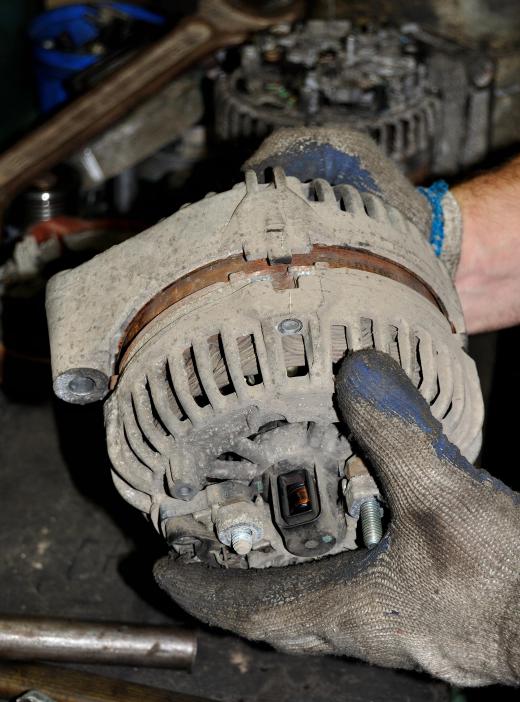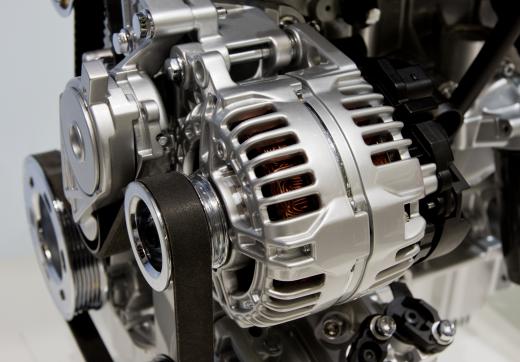What Is an Electromagnetic Generator?
An electromagnetic generator is a device that transforms mechanical energy into electrical energy, using the interconnected principles of magnetism and electricity. The process by which an electromagnetic generator produces electricity is called electromagnetic induction, which basically means that an electric current is induced within a conductor through use of a magnet. Most electronic generators work on electromagnetic induction, and some of these use renewable energy sources such as water power and wind power to create the initial mechanical energy. Mechanical energy can basically be thought of as kinetic energy, or movement energy.
Induction in an electromagnetic generator is the process which creates the electricity inside the conductor. This process works because the forces of electricity and magnetism are basically the same thing. Both work on the principle that some particles have a charge, and objects with opposing charges are attracted to each other. Negatively charged electrons are attracted to positively charged protons, through the process of basic magnetism. The flow of electrons to a positive charge is referred to as electricity.

These linked principles mean that electricity can be created using this type of generator. When a magnet is passed over a conductor, it basically organizes the positively charged and negatively charged particles into groups, because the relevant particles are attracted to the opposite poles on the magnet. This creates electric energy within the conductor as the particles move into position. By constantly turning a conductor through a magnetic field, a continuous flow of electricity is created. This is called electromagnetic induction.

The general design for an electromagnetic generator is based on this process of electromagnetic induction. A British scientist named Michael Faraday discovered this phenomenon in 1831, and an updated version of this basic design is used for most types of electromagnetic generator today. Faraday created a generator by setting up a horseshoe magnet with a loop of wire rotating between the north and south poles. The wire is attached to a device which can either directly use the power created or to a battery which stores the energy. Connecting the generator to a volt meter shows how much current is being created.
Energy is never created or destroyed, so the force used to turn the mechanical portion of the generator still requires a source of energy. This can be obtained through fossil fuels or nuclear energy, but it can also be created through renewable forms of energy. Many electromagnetic generators rely on the power created by the wind, falling water or even solar energy. If an electromagnetic generator works on a renewable and free energy source, the power generated doesn’t harm the environment.
AS FEATURED ON:
AS FEATURED ON:












Discuss this Article
Post your comments